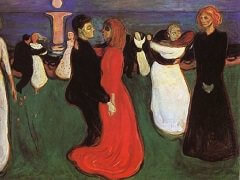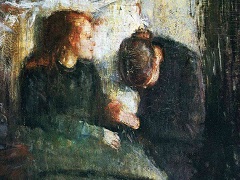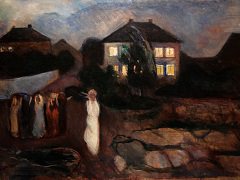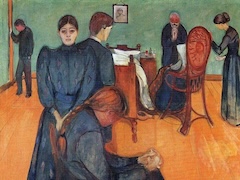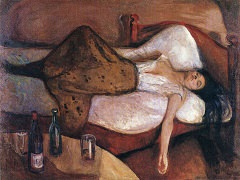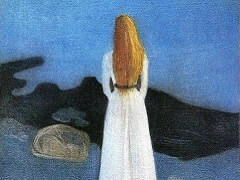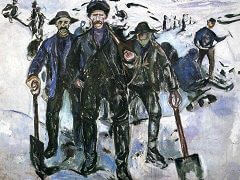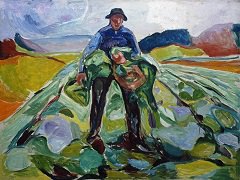Night in Saint Cloud, 1890 by Edvard Munch
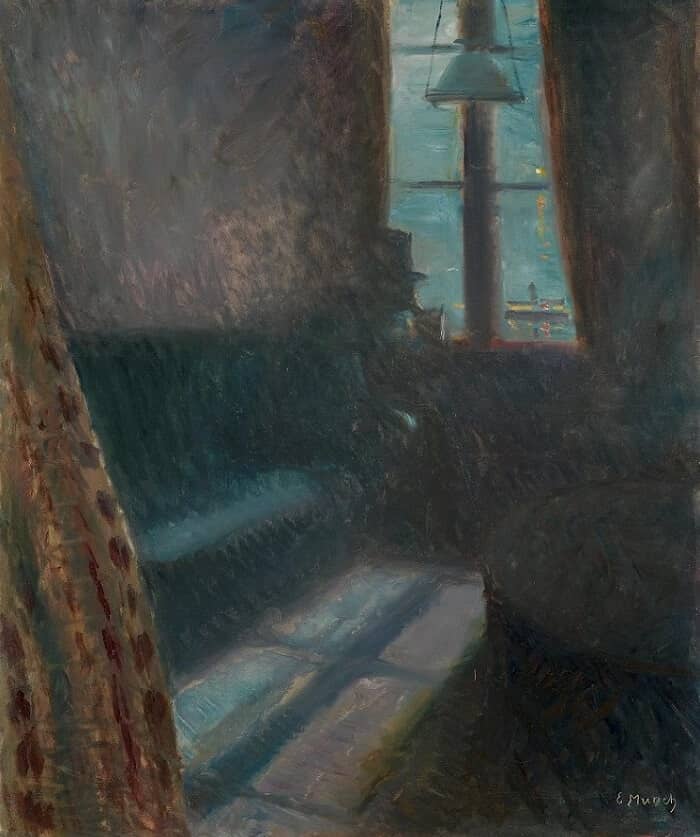
Munch first created Night in Saint Cloud in 1890, while living in the Parisian suburb of Saint-Cloud. In the years 1889-91, Edvard Munch lived in France, supported by an artist's bursary from the Norwegian state. When cholera broke out in Paris in December 1889, Munch moved to St. Cloud, outside the city. There he rented the floor above a café, which commanded a beautiful view of the Seine.
If the Sick Child is a loving tribute to Munch's favorite sister, this painting is a far more complex and darker memorial to the artist's father who had died the previous year.
Munch's use of the drapes in this Night in Saint Cloud invoked a device that had been employed by a number of the Old Masters as a trompe-l'oeil way of drawing the viewer into the composition, pointing to the artifice of the scene, and also showcasing their own ability to paint something as lifelike as the drapery hanging in front of a picture; this was the case, for example, in The Art of Painting by Johannes Vermeer, and Danae by Rembrandt. Munch's friend, the Danish poet Emanuel Goldstein, posed for the enigmatic top-hatted figure silhouetted in the moonlight.
Night in Saint Cloud also reveals the immediate influence of Post-Impressionists Van Gogh, whose many portraits of solitary figures or empty rooms inform this canvas. Munch's tribute to his father is composed of a darkened, seemingly hallowed room bathed in crepuscular light, indeed a space occupied only by shadows and stillness.



